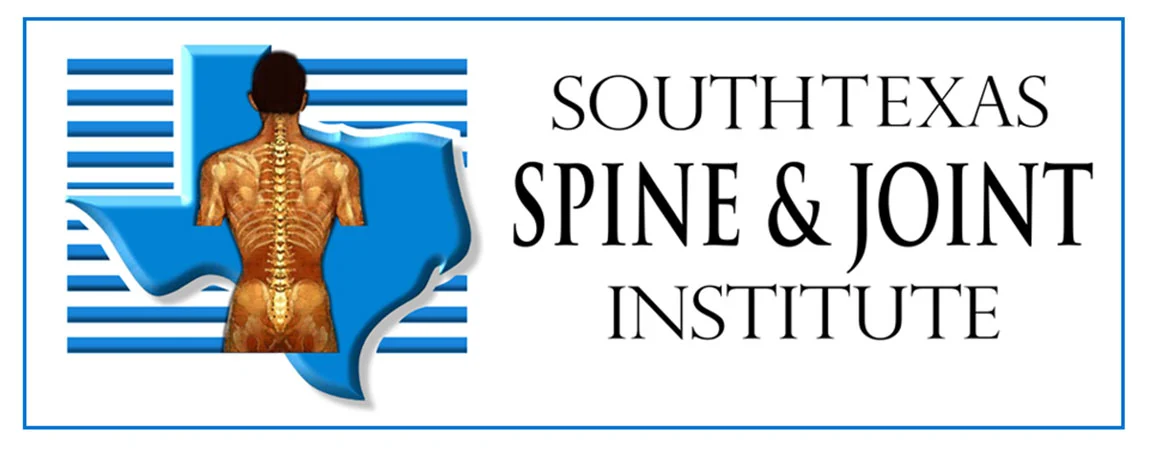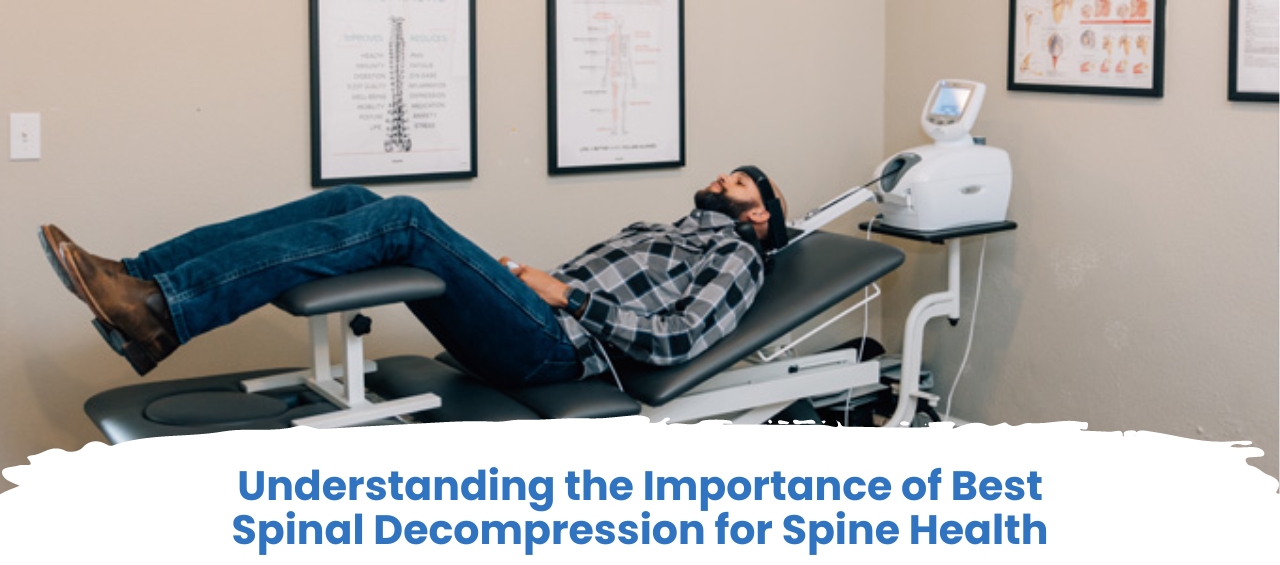Spinal decompression refers to various techniques aimed at alleviating pressure on the spinal column, typically caused by conditions like herniated discs or spinal stenosis. The importance of best spinal decompression for spine health cannot be overstated, as it helps relieve pain, improve mobility, and prevent further damage to the spine. There are several methods of spinal decompression available, each with its advantages and disadvantages. Non-surgical options such as traction therapy, inversion therapy, and manual decompression offer conservative approaches to relieving spinal pressure and can be effective for many individuals. In more severe cases, surgical interventions like microdiscectomy, laminectomy, or discectomy may be necessary to achieve the desired results.

Emerging technologies such as laser spine surgery and endoscopic spinal surgery are also changing the landscape of spinal decompression, offering minimally invasive alternatives to traditional surgical procedures. When considering the best spinal decompression method, factors such as the severity of the spinal condition, patient preferences, medical history, and physician recommendations should all be taken into account to determine the most suitable approach for each individual’s needs.
Non-Surgical Spinal Decompression Techniques
Non-surgical spinal decompression encompasses various techniques aimed at alleviating spinal pressure without the need for invasive procedures. Traction therapy involves the application of force to the spine to stretch and decompress the vertebrae, discs, and surrounding structures. This therapy can be administered through devices such as traction tables or harnesses, and it works by creating space between best spinal decompression segments, relieving pressure on nerves, and promoting healing. While traction therapy offers benefits such as pain relief and improved spinal alignment, it also has limitations, including the potential for muscle spasms or aggravation of certain spinal conditions if not administered correctly.

Inversion therapy involves hanging upside down or at an inverted angle to elongate the spine and reduce gravitational pressure on vertebral discs. While some individuals report relief from back pain and improved flexibility with inversion therapy, safety considerations such as the risk of increased blood pressure or eye pressure in certain individuals should be taken into account. Manual decompression techniques, such as chiropractic adjustments or massage therapy, utilize hands-on manipulation to alleviate spinal compression and improve alignment. Best spinal decompressiontechniques require expertise from trained practitioners who can tailor treatment to individual patient needs, taking into account factors such as spinal health, existing conditions, and patient comfort. However, manual decompression may not be suitable for all individuals, particularly those with severe spinal injuries or certain medical contraindications, emphasizing the importance of consulting with healthcare professionals before undergoing treatment.
Surgical Spinal Decompression Techniques
Best spinal decompression techniques offer more aggressive interventions for relieving spinal pressure and addressing underlying issues. Microdiscectomy is a procedure commonly used to treat herniated discs. During microdiscectomy, a surgeon makes a small incision and removes a portion of the herniated disc material that is pressing on the nerve roots or spinal cord. This relieves pressure on the nerves, alleviating pain and other symptoms associated with disc herniation. Success rates for microdiscectomy are generally high, with many patients experiencing significant improvement in symptoms. However, potential risks include infection, nerve damage, and the recurrence of disc herniation. Laminectomy involves the removal of a portion of the lamina, the bony structure that covers the spinal canal, to relieve pressure on the spinal cord or nerves. This procedure is often performed to treat spinal stenosis, a condition characterized by the narrowing of the best spinal decompression canal.
Laminectomy aims to create more space within the spinal canal, reducing compression on the nerves and restoring normal best spinal decompression function. Indications for laminectomy include severe pain, weakness, or numbness caused by spinal stenosis. While laminectomy can provide relief from symptoms, outcomes may vary depending on factors such as the extent of spinal damage and the patient’s overall health. A discectomy is a surgical procedure used to remove part or all of a damaged intervertebral disc. This may be necessary to relieve pressure on nerves, treat disc herniation, or address other spinal conditions. The recovery process following discectomy varies depending on factors such as the extent of the surgery and the patient’s overall health. In many cases, patients experience significant improvement in symptoms and can return to normal activities within a few weeks. However, long-term outcomes may also depend on factors such as rehabilitation efforts and lifestyle modifications to prevent the recurrence of spinal issues.
Emerging Technologies In Best Spinal Decompression
Emerging technologies in best spinal decompression offer innovative approaches to treating spinal conditions with less invasive procedures. Laser spine surgery utilizes laser technology to precisely target and remove damaged tissue in the spine. During the procedure, a laser is used to vaporize or shrink herniated discs or abnormal tissue, reducing pressure on spinal nerves. The advantages of laser spine surgery include smaller incisions, reduced blood loss, and potentially faster recovery times compared to traditional open surgery methods. However, considerations for laser spine surgery include the need for specialized training and expertise to ensure safe and effective outcomes, as well as the possibility of limited applicability for certain spinal conditions.
Endoscopic spinal surgery involves the use of an endoscope, a thin, flexible tube with a camera and surgical instruments, to access and treat spinal issues through small incisions. This minimally invasive approach allows surgeons to visualize and address spinal abnormalities with greater precision while minimizing trauma to surrounding tissues. Benefits of endoscopic spinal surgery over traditional surgery methods include reduced postoperative pain, shorter hospital stays, and a quicker return to normal activities. Additionally, endoscopic techniques may offer advantages such as improved visualization of the surgical site and a reduced risk of complications. Overall, these emerging technologies in the best spinal decompression represent promising advancements in the field, offering patients less invasive treatment options with potential benefits in terms of safety, recovery, and outcomes.

Comparison Of Different Spinal Decompression Methods
When comparing different best spinal decompression methods, several factors must be considered to determine the most suitable approach for each individual’s needs. Effectiveness varies depending on the specific spinal condition being treated and the severity of symptoms. Surgical methods such as microdiscectomy or laminectomy may offer more immediate relief for certain conditions, while non-surgical techniques like traction therapy or manual decompression may provide effective long-term management for others. Safety is a critical concern, with non-surgical methods generally posing fewer risks than surgical interventions. However, all procedures carry some degree of risk, and potential complications should be discussed with healthcare providers before treatment. Cost is another important consideration, with surgical procedures typically being more expensive due to factors such as hospitalization, anaesthesia, and post-operative care.
Non-surgical methods may offer a more cost-effective alternative for individuals with limited financial resources or insurance coverage. Recovery time varies depending on the complexity of the procedure and the individual’s overall health. Surgical methods may require longer recovery periods, with weeks or even months of rehabilitation before returning to normal activities. Non-surgical techniques often have shorter recovery times, allowing patients to resume daily activities more quickly. Long-term outcomes are crucial for evaluating the success of spinal decompression methods. Surgical interventions may provide immediate relief, but long-term outcomes can vary depending on factors such as post-operative rehabilitation, lifestyle modifications, and the natural progression of the underlying spinal condition. Non-surgical methods may offer sustainable benefits over time, particularly when combined with ongoing maintenance therapy and preventive measures. Overall, the choice of the best spinal decompression method should be based on a thorough assessment of effectiveness, safety, cost, recovery time, and long-term outcomes, taking into account the individual’s specific needs and preferences.
Factors Influencing The Choice Of Best Spinal Decompression Method
Several factors play a crucial role in determining the most suitable best spinal decompression method for an individual’s needs. Firstly, the severity of the spinal condition is a key consideration. More severe conditions, such as advanced disc herniation or spinal stenosis, may require surgical intervention for effective decompression. On the other hand, less severe or chronic conditions may be managed effectively with non-surgical techniques like traction therapy or manual decompression. Secondly, patient preferences should be taken into account. Some individuals may have a strong preference for non-invasive methods due to concerns about surgery, while others may prioritize quick relief and opt for surgical interventions despite potential risks.
Additionally, medical history and contraindications play a significant role in determining the appropriateness of certain best spinal decompression methods. Patients with underlying health conditions or previous spinal surgeries may have limitations on the types of procedures they can undergo safely. Finally, physician recommendation is crucial in guiding the choice of spinal decompression method. Healthcare providers can assess the patient’s condition, medical history, and preferences to recommend the most appropriate treatment approach. Their expertise and knowledge of the latest advancements in spinal care ensure that patients receive personalized recommendations tailored to their individual needs. Overall, a comprehensive evaluation of the severity of the spinal condition, patient preferences, medical history, and physician recommendations is essential for making informed decisions about the most suitable spinal decompression method.

Conclusion
In conclusion, spinal decompression plays a vital role in maintaining spine health and alleviating symptoms associated with various spinal conditions. By relieving pressure on spinal nerves and structures, decompression techniques can significantly improve mobility, reduce pain, and enhance overall quality of life. There are several methods of best spinal decompression available, including non-surgical techniques such as traction therapy, inversion therapy, and manual decompression, as well as surgical interventions like microdiscectomy, laminectomy, and discectomy. Emerging technologies such as laser spine surgery and endoscopic spinal surgery offer innovative alternatives to traditional approaches, with potential benefits in terms of safety, recovery, and outcomes. For individuals seeking the best spinal decompression treatment, it is essential to consider factors such as the severity of the spinal condition, personal preferences, medical history, and physician recommendations. Consulting with healthcare providers to discuss the various treatment options and their potential risks and benefits is crucial for making informed decisions about the most suitable approach for achieving optimal spinal health and well-being.
Experience the ultimate relief with South Texas Spine & Joint Institute, the premier destination for the spinal decompression solutions. Don’t let spine pain hold you back any longer – schedule your consultation today and embark on the path to a healthier, pain-free life!


No comment yet, add your voice below!